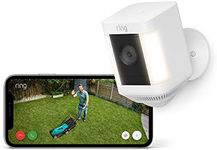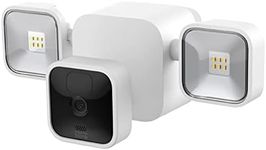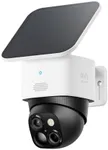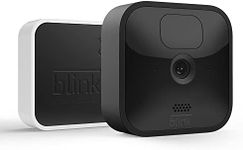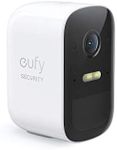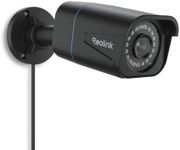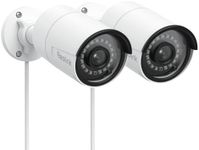Buying Guide for the Best Security Cameras
When choosing a security camera, it's important to consider your specific needs and the environment where the camera will be used. Security cameras come with a variety of features and specifications that can greatly affect their performance and suitability for different situations. Understanding these specifications will help you make an informed decision and ensure that you select a camera that meets your security requirements.ResolutionResolution refers to the clarity and detail of the video captured by the camera. Higher resolution cameras provide clearer and more detailed images, which can be crucial for identifying faces or license plates. Common resolutions include 720p, 1080p, and 4K. If you need to cover a large area or require detailed footage for identification purposes, a higher resolution camera is recommended. For general monitoring, a 720p or 1080p camera may suffice.
Field of ViewThe field of view (FOV) is the extent of the observable area that the camera can capture. A wider FOV allows the camera to cover more area, which can be beneficial for monitoring large spaces. FOV is typically measured in degrees, with common ranges from 90 to 180 degrees. If you need to monitor a wide area, choose a camera with a larger FOV. For focused monitoring of a specific spot, a narrower FOV may be adequate.
Night VisionNight vision is the camera's ability to capture video in low-light or no-light conditions. This feature is crucial for 24/7 surveillance, especially in areas that are not well-lit at night. Night vision capabilities are often measured by the distance (in feet or meters) that the camera can effectively see in the dark. Consider your environment and choose a camera with night vision that matches the distance you need to cover.
ConnectivityConnectivity refers to how the camera transmits its video feed. Cameras can be wired or wireless. Wired cameras are generally more reliable and offer consistent video quality, but they require more installation effort. Wireless cameras are easier to install and can be more flexible in terms of placement, but they may be subject to interference and require a strong Wi-Fi signal. Choose based on your installation preferences and the reliability of your network.
Storage OptionsStorage options determine how and where the video footage is saved. Cameras can store footage locally on a memory card or hard drive, or in the cloud. Local storage is often more secure and doesn't require internet access, but it can be limited in capacity. Cloud storage offers more flexibility and remote access, but it may involve subscription fees. Consider how much footage you need to store and how you want to access it when choosing storage options.
Motion DetectionMotion detection is a feature that allows the camera to start recording or send alerts when movement is detected. This can help save storage space and ensure you are notified of potential security events. Some cameras offer adjustable sensitivity settings or advanced features like person detection. If you want to minimize false alarms, look for cameras with customizable motion detection settings that suit your environment.
Weather ResistanceWeather resistance is important for cameras that will be installed outdoors. This specification indicates how well the camera can withstand elements like rain, snow, and dust. Look for cameras with an IP rating, which indicates their level of protection against water and dust. For outdoor use, choose a camera with a high IP rating to ensure durability and reliable performance in various weather conditions.

